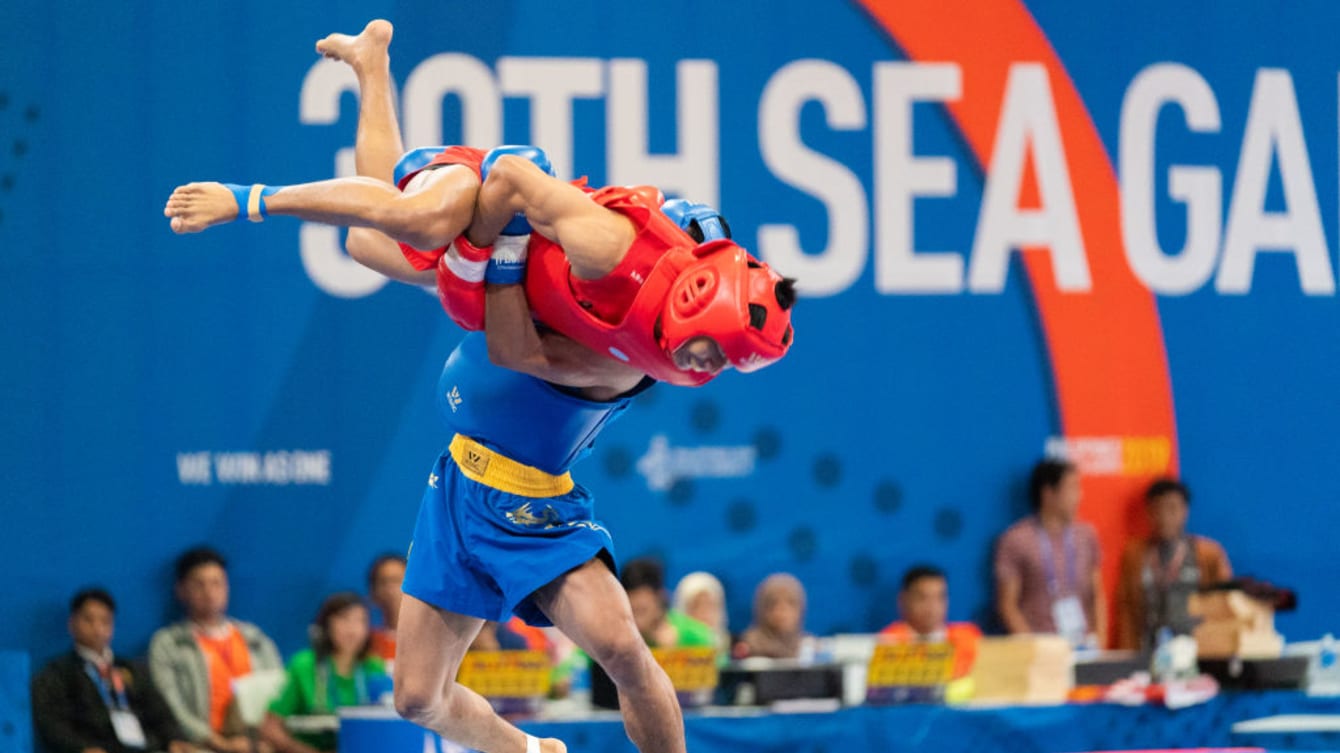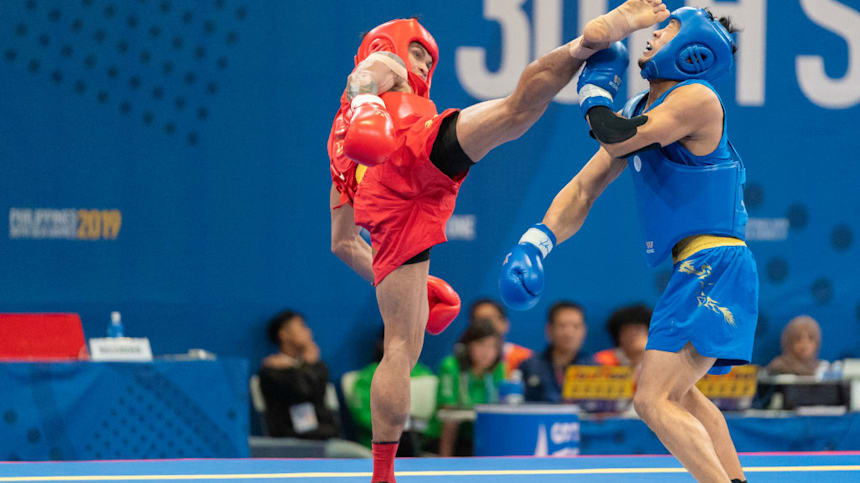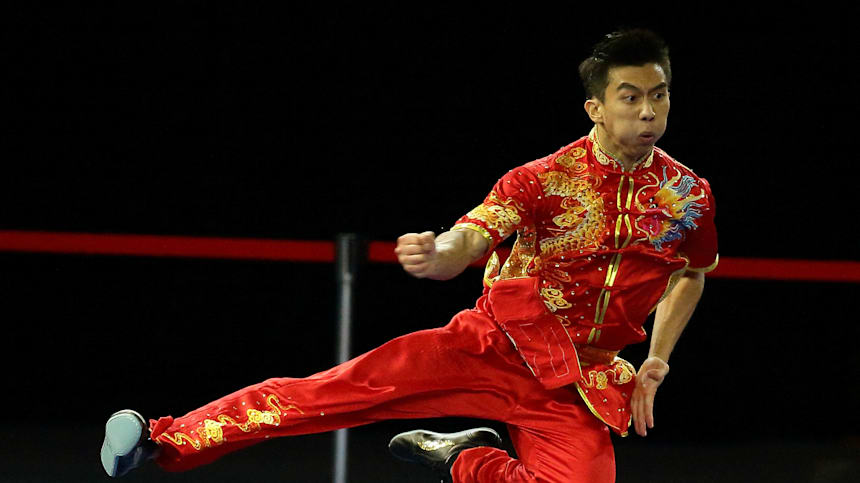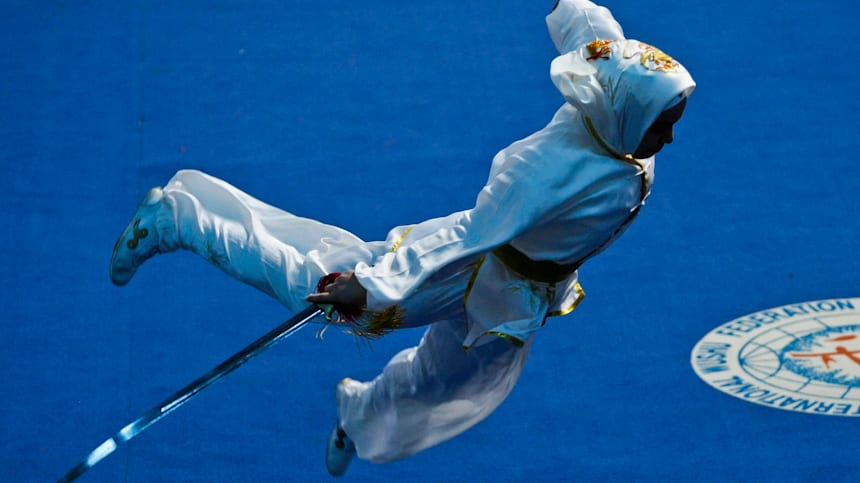What is wushu? Chinese martial arts contested as South-East Asian Games sport
The sport, which is featuring at the 32nd SEA Games in Cambodia, features various forms of Chinese martial arts including taijiquan (tai chi). Find out what is wushu here.
3 min
By ZK Goh
Updated on 27 June 2023 10:12 GMT-7

(2019 Getty Images)
Did you know tai chi (taijiquan) is being contested as a sport at the South-East Asian Games (SEA Games) 2023 in Phnom Penh, Cambodia?
Specifically, it is one of the events under the umbrella sport of wushu, a collection of Chinese martial arts. Wushu is also sometimes called kung fu, and both are names generally referring to the Chinese martial arts.
Indeed, there are 22 different wushu events being held in Phnom Penh, ranging from artistic displays to fighting-style bouts.
But what is wushu? What does “wushu” mean? What type of sport is wushu? What is the history of wushu? Read on to find out.

A wushu sanda (combat) bout in the men's 56kg category during the 2019 SEA Games in Manila
(2019 Getty Images)
History and styles of wushu
Wushu, written 武术 in Chinese, literally means “martial technique”.
It has a history dating back thousands of years to the Qin Dynasty, while the International Wushu Federation was formed in 1990 to govern the many distinct types of martial art under the “wushu” banner.
In the modern day, there are two main disciplines of wushu: taolu, or choreographed routines, and sanda, full-contact combat.
Taolu is further split into categories based on different stances, movements, routines, and even weapons – including the bare-handed taijiquan and taijijian, which is tai chi with a Chinese straight sword.
Meanwhile, sanda features combat using wushu and kung fu techniques, and is split into weight categories similar to other Asian martial arts such as judo and taekwondo, effectively making it the fighting form of wushu.
The first World Championships were held in Beijing in 1991 and held every two years since; it first appeared on the Asian Games programme the year prior and has been contested at every Asian Games since.
It was first added to the SEA Games in 1991, and aside from exclusions in 1995 and 1999 has not been left off the programme since.

An athlete performs a wushu taolu changquan routine during the 2015 SEA Games in Singapore
(2015 Getty Images)
Wushu sports events at 2023 SEA Games and equipment
There are 22 events taking place in Phnom Penh: 14 in taolu and eight in sanda.
The eight sanda events are split into three women’s weight categories and five men’s weight categories, while the taolu events are:
Men’s and women’s changquan
Men's and women's duilian (dual event, featuring teams instead of individuals)
Men's and women's nanquan
Men’s and women’s daoshu + gunshu
Men's and women's jianshu + qiangshu
Men's and women's taijiquan + taijijian
Men's and women's nandao + nangun
The changquan, nanquan, and taijiquan events are bare-handed, while the others all use weapons.
The daoshu uses a broadsword, nandao uses a Southern Chinese variation of the broadsword, gunshu and nangun use a staff, the taijijian and jianshu are performed with a straight sword, and qiangshu with a spear.
Taolu events are judged with a difficulty and execution score, while sanda is direct head-to-head combat.

Turkey's Elif Akyuz performs a wushu taolu jianshu routine using a Chinese straight sword at the 2013 Islamic Solidarity Games








 Reply With Quote
Reply With Quote